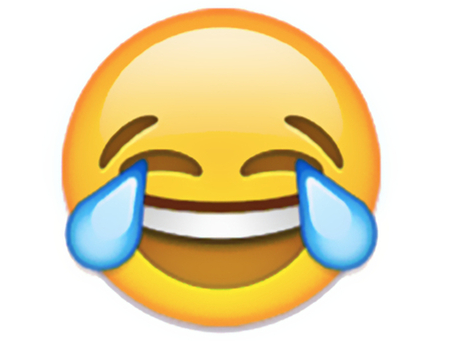A smiling face with tears, or "Tears of Joy", was chosen as the most popular emoji globally, according to a report released by Chinese tech startup Kika.
我国科技初创公司Kika发布的报告显示,"笑哭"被评为全球最受欢迎的表情符号。
Based on internet user behavior across the world, the report "Emoji, the Rise of New World Language" shows that "Tears of Joy" ranked No 1 in terms of frequency of use by netizens, followed by "Heart" in second place and "Love" in third.
该报告名为《Emoji,新世界语的崛起》,根据世界各地互联网用户的行为编纂而成。该报告显示,"笑哭"是网友使用频率最高的表情符号,"爱心"和"两眼冒爱心"分列二、三位。

The report also indicated that Chinese people check their WeChat 14.5 times on average and spend 48 minutes on social media per day. "Grin" is the most frequently used emoji by Chinese.
报告还显示,国人平均每天打开微信14.5次,每天使用社交媒体的时间是48分钟,使用最多的表情符号是"龇牙"。
"Face with Tears of Joy" became one of the most frequently used "words" in 2015 and was also the word of the year as judged by the Oxford English Dictionary.
2015年,“笑哭”符号成为该年度使用频率最高的词汇,同时也被《牛津词典》授予“年度词汇”的称号。
Like text messages, different emoticons represent different meanings and emotions. They are often more intuitive and simple than words, which is also the reason they have become so popular worldwide.
表情符号如同文字一样,每一个表情符号都可以代表不同的含义和情感,某种程度上它比文字表达更为直观和简洁,这也是其在当下能够席卷全球的主要因素之一。
Therefore, more and more people choose to express their emotions and ideas by using emojis.
因此,越来越多的人也倾向于通过表情符号传达自己的情绪和想法。













